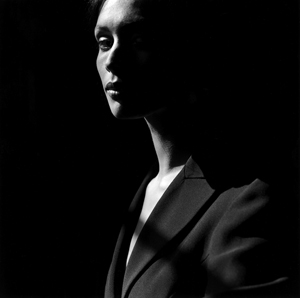“For what shall it profit a man, if he shall gain the whole world, and loose
his own soul?”
– Mark 8:36
It’s not that our culture, our lives, our aspirations has lost its soul, it’s simply misplaced them. We have exchanged moral and emotional character for cerebral acumen, success and creativity. For the last 25 years I am afraid to say, our culture has been running on empty.
Photography, with all it’s myriad of critics, curators, pundints, have simply followed the leader. Everyone is chasing each others tail, desperate for anything that strikes them as different.
Instead of leading us to a better place, we are left with work that is soulless, and proclaimed by those who know, as insightful, brilliant, and all other manner of other affirmations. The problem is, that in these photographs, life is befit of joy and God forbid, emotion. Photography and much of modern art is without a real sense of self. It feels incomplete, empty, and very, very lonely.
So with this joyful prologue, I am about to tell you a simple story about the very best student I ever had and over the years. Unfortunately, I have only a story to tell and without pictures it is hard to specifically tell you why I think she was the best. I have had many. It is hard to specifically tell you why I think she was the best. But like a good aphorism, and you are just going to have to believe me on this, I know greatness when I see it.
When I first graduated from graduate school some 40 years ago, I taught a great deal in an attempt to provide some modicum of income to a starving photographer. I also enjoyed it.
I taught for years at different places and finally through a friend was asked if I wanted to teach college seminars at Yale. This was not through the photography program, which would have no use or interest in me; it was through the master (the head) of Branford College at Yale.
Anyway, for two years and four or five classes later, I taught a seminar to about 15 students at a time, photography with a twist.
There were texts in Theology, English, romantic poetry, 19th and 20th Century Literature, along with a spattering of photographic literature and handouts. I knew I was rocking the boat, but as usual I just simply plowed along.
Finally, after two years I understood that there was a rebellion. The English and Theology Departments wanted to know who this person was teaching their text, and most importantly, I was summoned in to Tod Papageorge office, the then chairman of Yale’s photography department, and without any interest in me or any equivocation, informed me that no one, and he meant no one, would be teaching photography at Yale, unless it came through him.
So with that kind and gracious exchange, I stopped teaching at Yale and went elsewhere for a few years, but not before I had a chance to meet my favorite student.
Two years of teaching to some 60 undergraduate students had taught me a great and important lesson. For the most part, Yale students made terrible photographers. Are you surprised? Because I was. I assumed they would excel at photography as they had at everything else. They were young and I thought unlike graduate students, not so jaded, intimidated or isolated. But I was wrong. These students were intellectually extraordinary, but emotionally empty and immature. They had sacrificed or subliminated their true feelings for thoughts. They excelled at ideas, but were rather ordinary in their emotional well-being.
Then in the second year of teaching (and I am greatly embarrassed to say I have forgotten her name) comes this one student.
She was a large African-American woman from Chicago, whose mother was a janitor, and had worked her whole life to educate her daughter. This woman never forgot who she was or where she came from. She was gentle, quiet and content. And oh, what a soul. Her pictures spoke of her life and her compositional sense reflected better than almost anyone I have seen. She had a sense of place and where she fit into it.
You know that composition is like rhythm in music. It’s how you fill the space, both with emptiness and with fullness. It’s knowing where to place something and when it’s best to leave it alone. It’s about confinement in a frame and finding enormous freedom within the confinement. It is learning how to be liberated by the edges.
There was energy love, sadness and forgiveness in her work. I know this is all so abstract and basically leaves you, the reader, confused with what I saw, I wish I could show you as well. But let me assure you, what I saw was a gentle, quiet woman with a very large soul, a woman who was not fearful of her emotions and allowed them to rise to the surface, but never without the constraint of the intellect. She was a perfect example of art giving form to feeling.
Oh where, oh where are you today? You were my pride and joy and I wish the world could know you too. Please don’t tell me you have become an investment banker.
